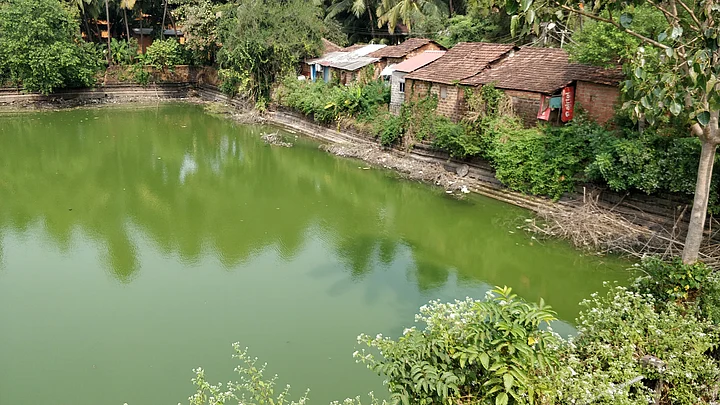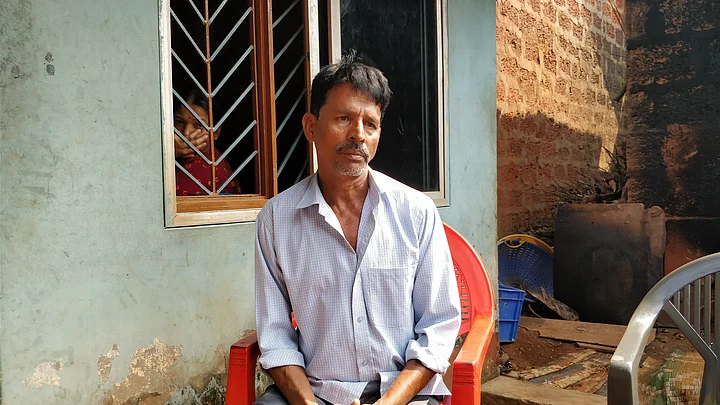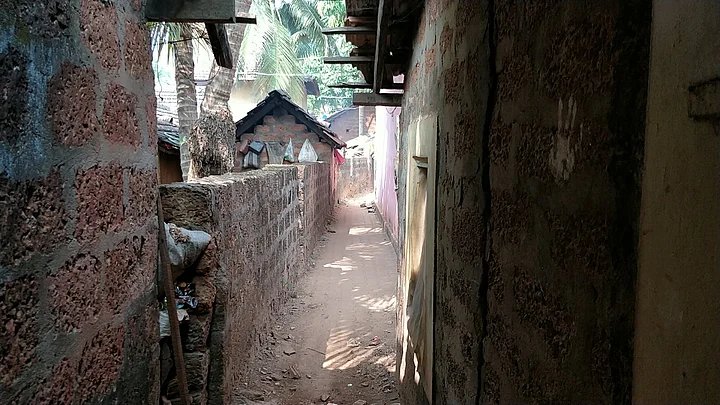Four days after the mysterious death of 19-year-old Paresh Mesta, the town of Honnavar limped back to normalcy, or so it seemed. Bus services resumed, shops reopened, and schoolchildren made their way to school.
After drinking tea at a local hotel that opened many days later, GU Bhat, a local journalist, took to explaining the events that unfolded over the past few days when he got a message on WhatsApp – a teenage girl was attacked on her way to school.
The Hindu girl lived in Magod village, just outside Honnavar, and was threatened by two men on her way to school. The men, who fled the scene when she shouted, left two superficial cuts on her hands. “She walked back to her relative’s house. We don’t know if it was a rape attempt, robbery or anything. A police case will be registered soon,” Bhat said.
But minutes later, the entire town came to a standstill. A message that the girl was attacked by two Muslim men had spread on the WhatsApp groups already. Muslims shut shop fearing a backlash, and Hindus closed theirs in protest.
Honnavar was a ghost town again.
Changing Face of a Small Town
Honnavar, a small port town in the Uttara Kannada district in Coastal Karnataka, has never been more polarised. The schism between the Muslims and Hindus has been so deep that they refrain from speaking to each other. Hindu auto-rickshaw drivers have been asked not to offer rides to any passenger from the other community, lawyers working in the local court steer clear of bail pleas for a few Muslim men arrested recently, and several Muslim families continue to remain within the confines of their homes in fear.
It all began with the mysterious death of 19-year-old Paresh Mesta. Mesta’s body was recovered from a pond in Honnavar on 7 December, following a communal riot between Hindus and Muslims.
Mesta, who – as per his father’s claims – had several Muslim friends, is now the face of Hindutva ideology in the town.
His death has now sparked violence across several towns. Just a day after his death, some WhatsApp messages sparked a furore in Kumta, a town 20km away from Honnavar. Just when police controlled the violence in Kumta, a protest march in Siri, more than 80km away, turned violent, followed by Sagar – 90km from Honnavar.
Origin of the Violence
Even though the communal violence, which led to the death of Mesta, was said to have started from a road accident between a Muslim motorcyclist and a Hindu auto-rickshaw driver, the story dates further back.
On 1 December, two processions – Hanuman Jayanti and Eid Milan – were to take place in Chandavar, a village 5 km away from the Honnavar. As per the tradition, the Hindu community takes the Hanuman idol on a palanquin. During the procession, the palanquin is rested in some place.
Following meetings with the local administration, the decision on fixing different times for the two processions was taken. However, an issue broke out between the communities, over the Muslims placing green flags and other religious material on the common route.
Although the situation was diffused, a BJP leader and a ticket aspirant in the 2018 BJP elections, Suraj Naik, alleged that some Muslims participating in the Eid procession pelted stones at his car. As the information of this incident spread, the tension between the communities surged.
A Ground, Two Trees and A Battleground
A small piece of government land with two Devadaru trees has been a bone of contention between the two communities in Honnavar. Several years ago, under the tree, some people began offering prayers to the Hindu god Shani deva. The installment of a small statue near the tree subsequently led to the construction of a temple for Shani Deva nearby, and the ground was used by the Hindu community for the temple festivals as well.
Not far away from the ground is a Masjid and every year, the same ground is used for the Muslim community’s festivals.
According to Bhat, whose office is located a stone’s throw away from the ground, on 3 December, alongside a temple festival, a Muslim community was distributing non-vegetarian food as part of their Eid celebrations. Some people took objection to this, and a dispute took shape.
“I came near the ground 15 minutes later and two groups were clashing against each other. Soda bottles were being thrown and some men were even carrying canes to thrash the other side. It lasted for around half an hour,” he said.
The Accident and More Violence
On 6 December, at a circle less than 1km away from the ground, a road accident took place between a Muslim motorcyclist and a Hindu auto-rickshaw driver. Although the matter was being resolved, more people gathered, and a simple road accident took communal shades. As the argument went on, some of the youths challenged to take revenge for the ‘road accident’.
This led to another confrontation, once again at the disputed ground.
The Missing Teenager
According to police, as a large chunk of the force was deployed for security arrangements for the chief minister’s rallies in coastal Karnataka, there was one officer and a handful of constables to handle the situation, when it broke out initially. Later, additional force was called in and the situation was brought under control.
But 19-year-old Paresh Mesta didn’t reach home that night.
Mesta worked at the port and kept account of three fishing boats. A school dropout, he was not associated with any political party, but was one of the motivated Hindu youth in the locality. His body was found floating in a pond, next to the ground, a day after the violence.
“He left home around 7.30. He said he will be back soon,” said Kamalakar Mesta, father of Paresh. “Some of his friends said his bike was found near the shop of a Muslim man. I know my son has been killed by those who were rioting there. He was tortured and killed,” he added.
The report by the forensic experts said there was no evidence of the torture on his body. However, it is yet to be proved that it was not a murder. One of the facts standing in the way is the construction of the pond, where he was found dead. The pond has barriers on all four sides. “If he had accidentally fallen, over the walls of the pond, he would have landed on rocks not in water,” said one of the local residents.
Making of a Martyr
A colony filled with narrow lanes, Paresh’s house is in an inconspicuous corner. Just outside the colony, where over 200 fishermen families live, a huge hoarding with Paresh’s photo has been erected.
Even though his father has categorically denied that his son had no political affiliations, he became a Hindu martyr overnight.
“The day after his death, there wasn’t much activity, there was anger within the community, but it was muted. It was after the post-mortem was over, some BJP leaders came to the town and took out a rally along with Paresh’s body. Things haven’t been same since,” said a prominent businessman in town, he didn’t want to be named.
It was not just the Hindu youth in the town, have been moving towards the polarised ideas. “One of the five people arrested based on the father’s complaint Azad Annegeri, owner of Good Luck Hotel, was among the many youths in the city, who wanted to pose an opposition to the rise in Hindu right-wing organisation,” he added.
Once the politicians were in town, the divide has become stronger, say the residents.
The Politics of Hatred
Unlike the Dakshina Kannada district, which includes the port of Mangaluru, Uttara Kannada district hadn’t seen sustained communal tensions. Even after the Babri Masjid demolition, this part of the state saw no violence. But in 1993, Bhatkal in Uttara Karnataka saw a communal riot, which saw the death of 16 people, including some prominent leaders.
However, that was the last time this part of the state saw communal violence. But things are changing now. “The town has never been so polarised. The dominant narrative among youth, irrespective of parties, has been centred around religion, leading to this poison being spread to the villages as well for the first time. It's tough to bring the communities out of this vicious circle," lamented Dr H S Anupama, a Kannada writer and doctor from the town.
While the towns in Dakshina Kannada are gripped by communal fervour, hope comes from a handful of citizens, who have been helping the Muslim families trapped in their houses to evade violence. “We go early in the morning to give them the essentials. If we are seen in public, we will be called anti-Hindu. But how can you let some fellow humans starve. We hope it is a election strategy and it will pass too,” said one of the prominent citizens in Honnavar, requesting anonymity.
(At The Quint, we question everything. Play an active role in shaping our journalism by becoming a member today.)



